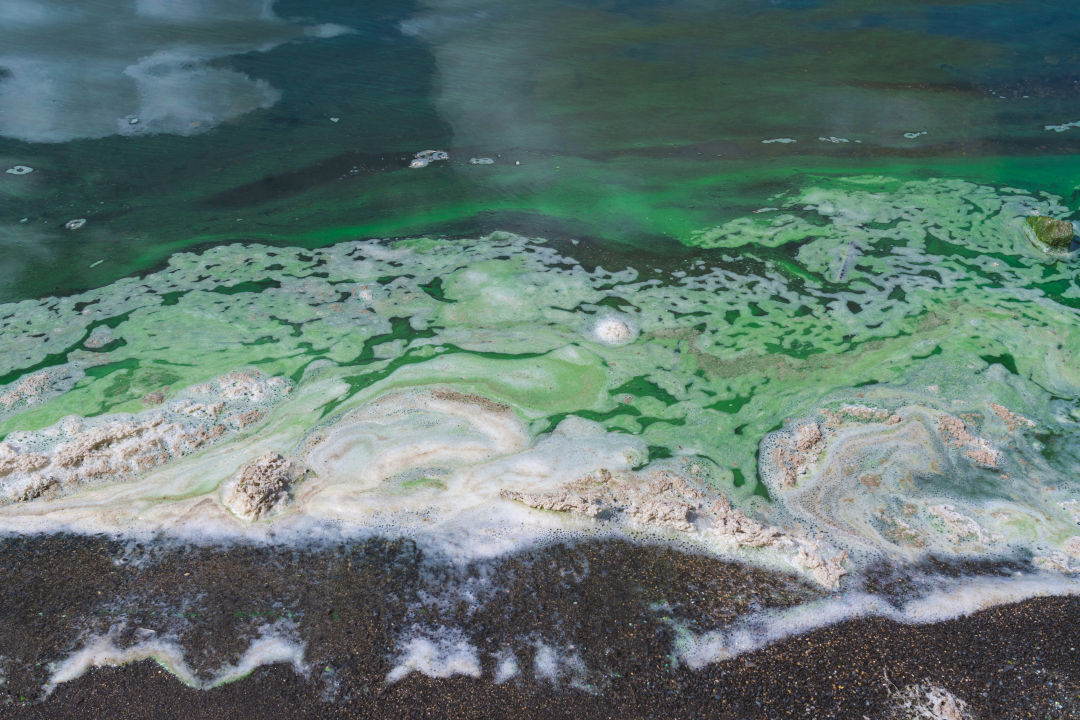Should We Be Scared of Washington's Toxic Lakes?

The stories about deadly algae that make the rounds in traditional and social media every summer should come with a warning for dog lovers: This is going to break your heart. The pattern is predictable: Someone reports a pet acting strange after taking a cooling dip in local waters, and the rush to the vet ends in vain. Two animals fell victim to toxic algae in 2006 south of Port Townsend, and then another in 2019 at the same place, Anderson Lake. In 2021 four dogs died near Spokane, and four more around the Tri-Cities. It’s an ongoing horror story.
The good news? This is a relatively rare horror story, with few reported cases in Washington since algae testing became a regular occurrence in the 2000s. The bad news? That testing has revealed that we’re trending the wrong direction. Gopal Mulukutla, a water and climate policy specialist for the state Department of Health, notes that since monitoring began officials have seen increases in three of the four toxins they look for: anatoxin-a, microcystin, and cylindrospermopsin. Mulukutla says climate change is likely a factor.
Anatoxin-a, the toxin responsible for those three dog deaths in Anderson Lake State Park, appears when cyanobacteria and phytoplankton multiply in a body of water, usually due to warming—a phenomenon known as a bloom, which you might recognize from the look of bright green paint atop the water. It’s harmful to humans, too, but because animals are more likely to lick themselves after exposure, they are often the ones struck.
“It is very fast and very drastic,” says Michael Dawson, water quality manager for Jefferson County. The presence of anatoxin-a can’t be attributed simply to recent pollution, even though farming occurs around the lake. Sediment tests show that it was making appearances even before white settlement of the area.
Still, just because it’s natural doesn’t mean it’s welcome, and every year Dawson has tested Anderson Lake, it has registered levels above recreational guidelines. When that happens, signs are posted around the park. So far, no confirmed reports of human illness have been registered. The state posts testing information at nwtoxicalgae.org, but only a few known hot spots like Anderson (and Cranberry Lake near Anacortes, for another) get frequent checks, visible blooms or not.
Lizbeth Seebacher, an ecologist with the Department of Ecology, oversees a freshwater algae control program for the state. She notes that while most people call it that, the cyanobacteria are not an algae “in a technical sense”—but the name has stuck. Though cyanotoxins are a rising problem worldwide, she estimates that the 2021 heat dome helped increase levels in Washington.
Dawson gets the fear that toxic algae inspires. “I have a dog who loves to swim, and it’s not like you have to avoid all lakes,” he says. There are signs: The cyanobacteria that produces the poison often has that singular green painted look. It usually forms in stagnant or very slow-moving water. And again, instances of dogs dying from water exposure are rare.
Still, Seebacher says she personally avoids water she doesn’t absolutely know is safe. “If it’s looking kind of green and makes you a bit nervous,” the safest course of action is to stay dry, she says. Given our area’s population boom, which sends more nutrients through stormwater to feed such blooms, she says there’s no way to predict the future for Washington’s water recreation. Dawson cites the more concise catchphrase used in public messaging: “When in doubt, stay out.”




